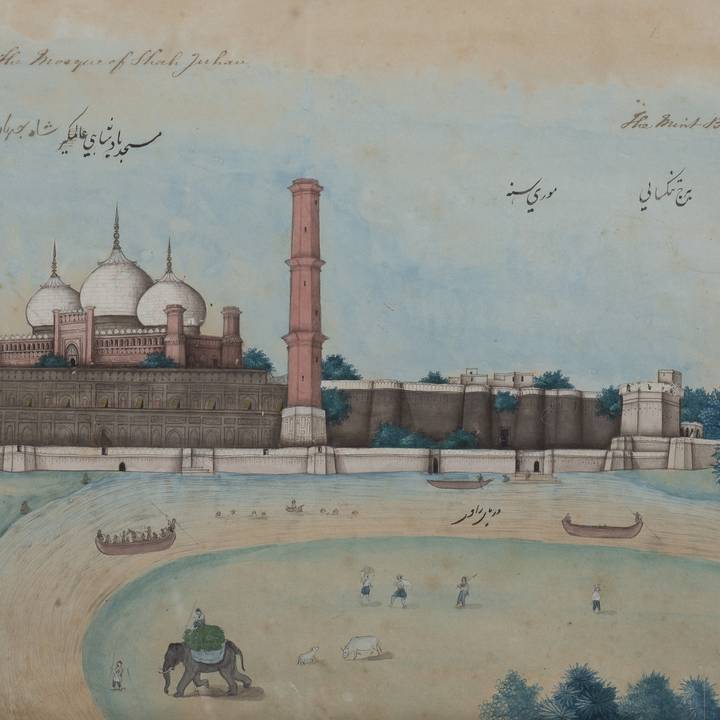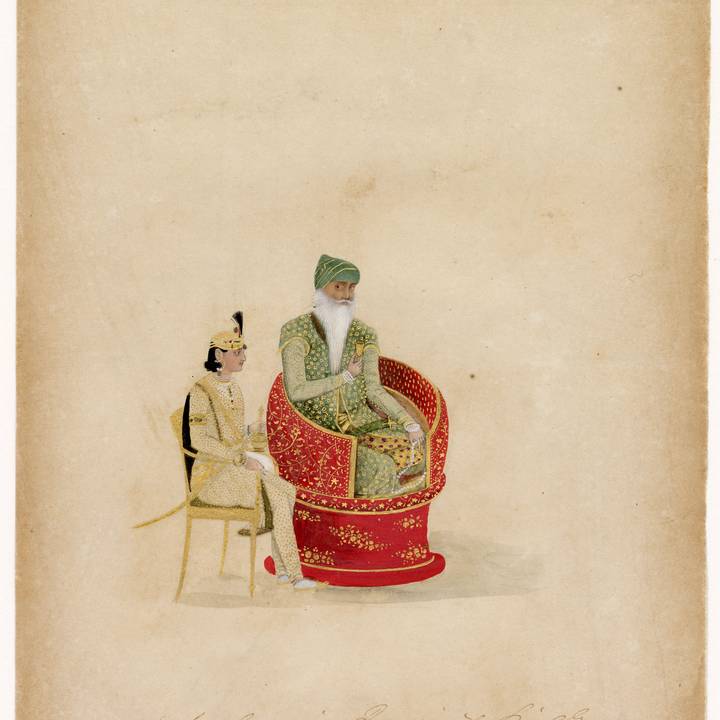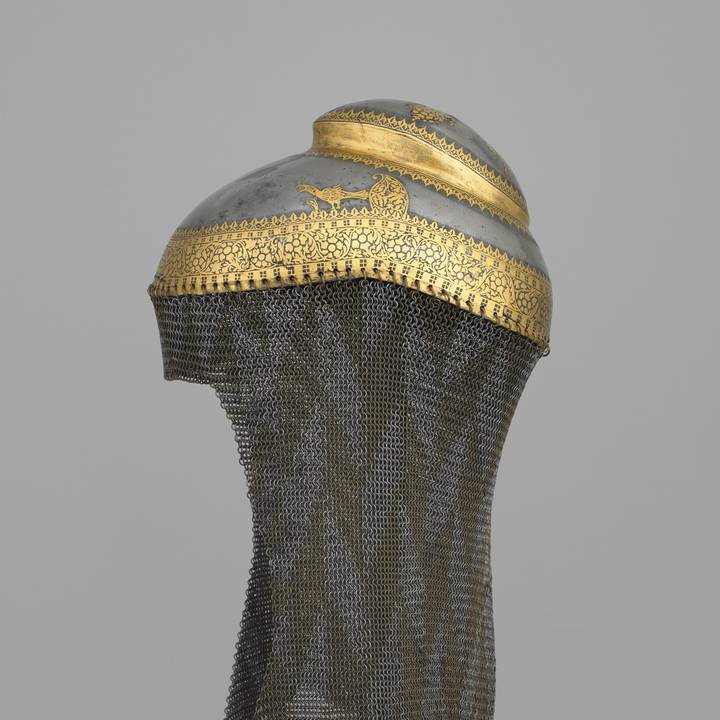Maharaja Duleep Singh (1838-1893) was the seventh son of the ‘Lion of the Punjab’ – Maharaja Ranjit Singh (1780-1839) – and his youngest wife Jind Kaur (1817-1863). Born on 23 September 1838, he came to the throne of Lahore at the age of five, after the assassination of his half-brother Sher Singh (1807–1843) in 1843.
During his reign as a minor, the administration of the kingdom fell upon his mother and a host of prime ministers. Two Anglo-Sikh Wars broke out, with his mother being imprisoned in the interim, while the conclusion of the Second Anglo-Sikh War saw the Kingdom of Lahore being annexed to the British East India Company in 1849. The ten-year-old maharaja had to relinquish all rights for himself and his heirs to the throne of Lahore, and in return he would receive a pension of no less than £40,000 and no more than £50,000 per annum.
The maharaja was placed under the care of Dr John Login, a Scottish army surgeon, whose duty it now was to bring up the deposed minor as a fine English gentleman. He was schooled in Fatehgarh Cantonment alongside other European boys, where his curiosity in the faith of his peers began. He showed an interest in Christian teachings and was later baptized in the confines of his residence in 1853.
In the spring of 1854, the maharaja was given permission to travel to England to further his studies. He arrived in London in May of that year with Login and was given an instant audience with Queen Victoria, but the small matter of his education was tactfully swept aside. He was encouraged to mix with the royal princes, holiday with them at Osborne House, and open correspondence with the teenage Prince of Wales (later Edward VII).
Login took the maharaja to his native Scotland where he rented Menzies Castle for him in Aberfeldy, and here the maharaja was initiated into grouse shooting. He became one of the top three shots in the country.
In 1860, he established contact with his mother who had managed to escape from British captivity and was now living under the protection of the King of Nepal. He was given permission to visit her as the India Office felt that the maharani was now of no danger to them, as she was in ill-health. The maharaja travelled out to Calcutta (Kolkata) in 1861 and met his mother after some 13 years apart. He was encouraged to bring her back to England where he took up a house for her in London’s Lancaster Gate.
In 1863, Maharani Jind Kaur passed away and he once again travelled to India the following year to cremate his mother on the banks of the River Godavari at Nasik. On the voyage back to England, he stopped at Alexandria where he married Bamba Muller (1848 –1887), a student and teacher at the American Mission in Cairo of German and Ethiopian descent, whom he was introduced to on his outward journey to Nasik.
The maharaja set up home with his new bride at his recently acquired and renovated Suffolk estate at Elveden Hall, where the couple brought up their family of three sons and three daughters. Here he held the most lavish shooting parties with members of the British royal family in regular attendance. As the cost of running his estate and a royal household brought about financial difficulties, the maharaja asked for an increase in his pension as stipulated in the Annexation Treaty of 1849. The India Office however felt that the amount he was receiving was sufficient and they were not prepared to honour the terms of their Treaty. The maharaja became disillusioned by his surroundings, as requests for a trial into his financial affairs were constantly rejected by the board of the India Office, the current crop of which had no sympathy for him.
The maharaja decided to leave England. He packed his belongings, took his family and headed for India in 1887. On route, he was halted and effectively arrested when the ship docked at Aden. He sent his family back to England and remained under detention to have one last stand against the British Government.
The denial of his passage to his homeland drove him to other European powers eager to meddle in his affairs. On the death of his wife, he married his mistress Ada Wetherill, who bore him two daughters. His failed attempts to re-capture his kingdom with unrealistic promises from the Fenians, the French underworld, and Russian agents was a burden on the maharaja’s health, and he suffered a series of strokes, dying a broken man in a shabby Parisian hotel room in 1893 at the age of 55.
From his first wife, the maharaja’s eldest son, Prince Victor (1866-1918), joined The Royal Dragoons, but with a reckless lifestyle, gambling habits and continuous debts, he retired to Paris where he flirted for a time with the revolutionary Ghadar Party who were fighting for India’s Independence. The second son, Prince Frederick, was more the country gent; a historian by right, he delved into archaeology, photography and antiquities, and served with the Norfolk Yeomanry.
The three daughters all joined the women’s Suffrage movement. The two eldest, Bamba (1869-1957) and Catherine (1871-1942), became Suffragists, while the youngest, Sophia (1876-1948) became a Suffragette and was also a member of the Tax Resistance League, and a key associate of the Pankhursts, taking an active part in the 1910 Black Friday protests, which were violently suppressed by the police. Catherine retired to Kassel, Germany with her governess and lover, Lina Schäfer. When the Nazi Party came to power, she vouched and financially supported the safe passage of dozens of Jewish people, many of whom she housed at her Buckinghamshire residence in Penn.
Princess Bamba outlived all her siblings and settled in Lahore where she constantly troubled the India Office, demanding that the Punjab be rightfully hers. She died in 1957 at the age of 89, and the collection of Sikh art and artefacts from the Lahore Durbar that were in her possession were purchased for the Lahore Fort Museum upon her death.
This article was written by historian and art collector, Peter Bance, author of Sovereign, Squire and Rebel: Maharajah Duleep Singh.



